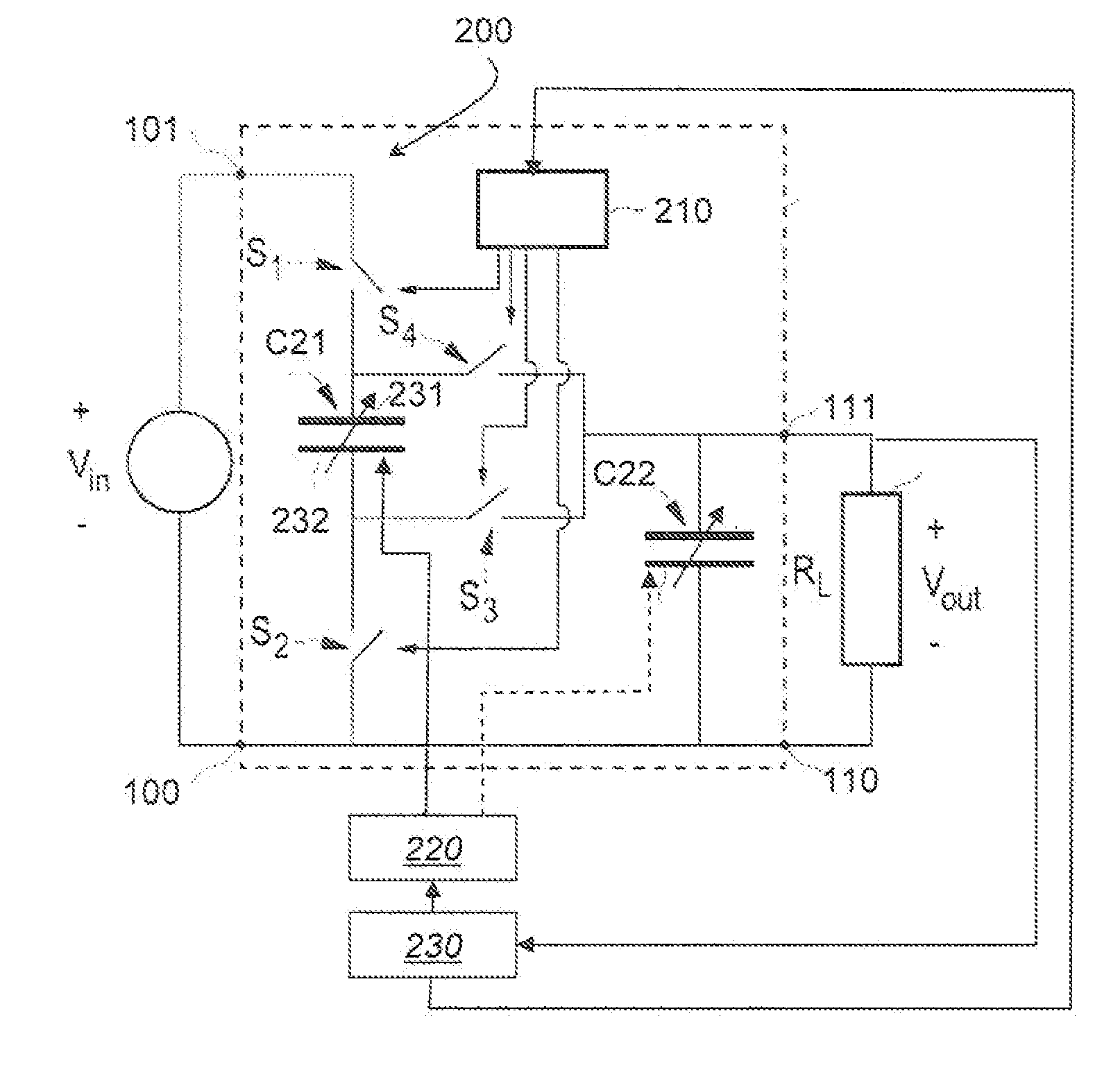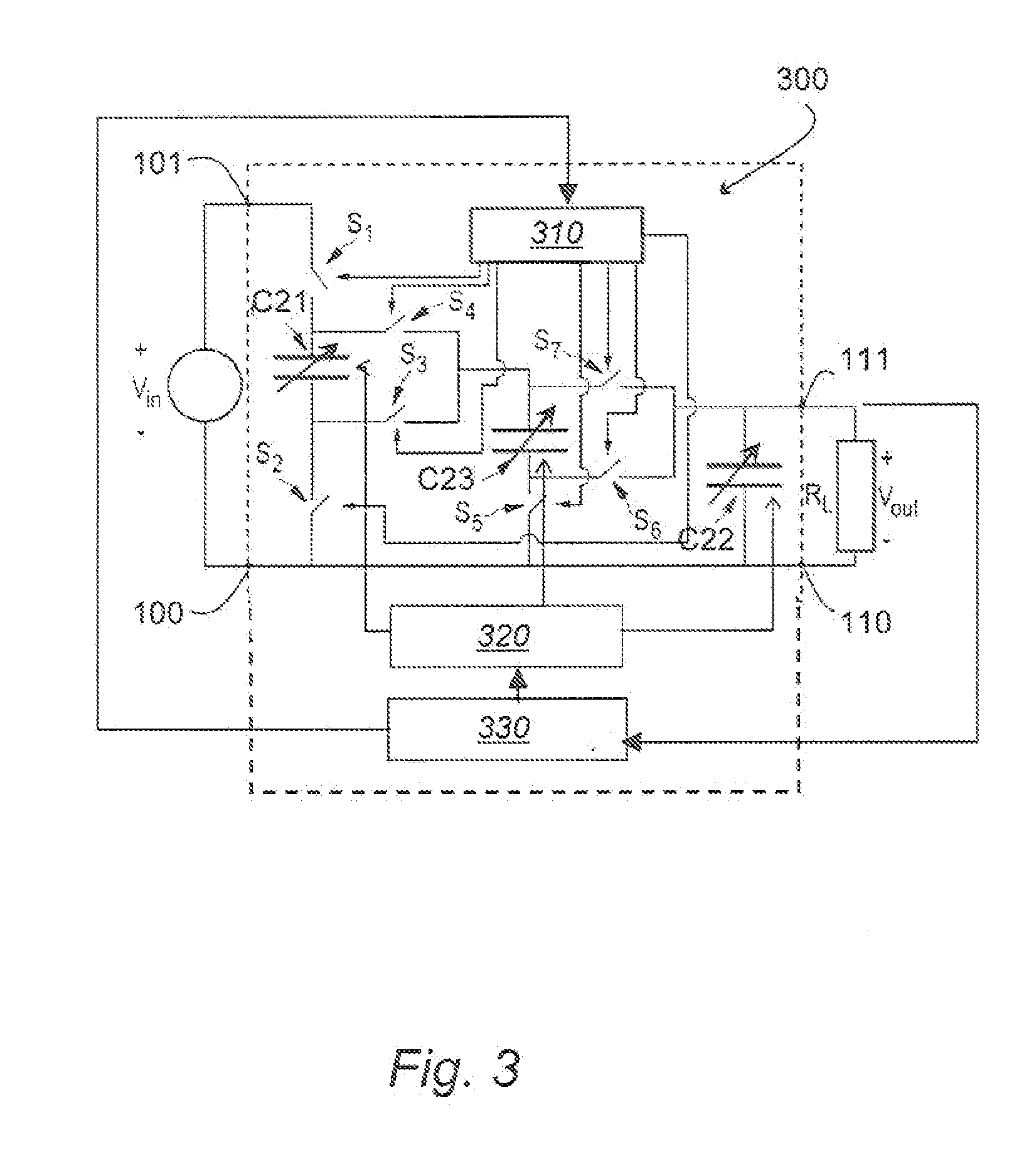Capacitive dc-dc converter
a capacitive converter and dc-dc technology, applied in the direction of dc-dc conversion, power conversion systems, instruments, etc., can solve the problems of linear regulators then inefficient, capacitive converters always less than 100% efficient, and it is difficult to miniaturize inductors
- Summary
- Abstract
- Description
- Claims
- Application Information
AI Technical Summary
Benefits of technology
Problems solved by technology
Method used
Image
Examples
first embodiment
[0041]FIG. 2 shows the DC-DC capacitive converter according to the invention. The converter is similar to that depicted in FIG. 1, and corresponding components are thus referenced by corresponding reference numerals. In this converter, however, the charge-pump capacitor C1 is replaced by a variable charge-pump capacitor C21, having top and bottom electrodes to 231 and 232 respectively. Similarly, capacitor C2 is replaced by the variable capacitor C22. The control unit for controlling switches S1 through S4 is shown at 210; its operation is similar to that described above with reference to FIG. 1. However, the control unit 210 differs from that described with reference to FIG. 1, in that it is also responsive to the output from a control loop 230. The control loop is responsive to the output +Vout, and in particular to the high side 111 of the output, and thus control loop 230 is shown in FIG. 2 as having an input connected to +Vout. In addition to controlling the control unit 210, c...
second embodiment
[0044]the invention is illustrated in the schematic circuit diagram of FIG. 3. The layout of this embodiment is generically similar to that described above with reference to FIG. 2; however this embodiment differs from that shown in FIG. 2, in that this embodiment includes a further charge-pump capacitor C23. As a consequence, there are more control switches, and the bias circuit or bias control 320 controls two or three capacitors rather than one or two as in the previous embodiment.
[0045]The arrangement of the control switches differs in detail from that in the previous embodiments, in that, instead of connecting the high side 111 of the output to the first and second electrode of capacitor C1 respectively, switches S4 and S3 connect the respective electrode to the first electrode of further charge-pump variable capacitor C23. The second electrode of the further charge-pump variable capacitor C23 is connected to the common low sides 100 and 110 of input and output by via switch S5...
PUM
 Login to View More
Login to View More Abstract
Description
Claims
Application Information
 Login to View More
Login to View More - R&D Engineer
- R&D Manager
- IP Professional
- Industry Leading Data Capabilities
- Powerful AI technology
- Patent DNA Extraction
Browse by: Latest US Patents, China's latest patents, Technical Efficacy Thesaurus, Application Domain, Technology Topic, Popular Technical Reports.
© 2024 PatSnap. All rights reserved.Legal|Privacy policy|Modern Slavery Act Transparency Statement|Sitemap|About US| Contact US: help@patsnap.com










